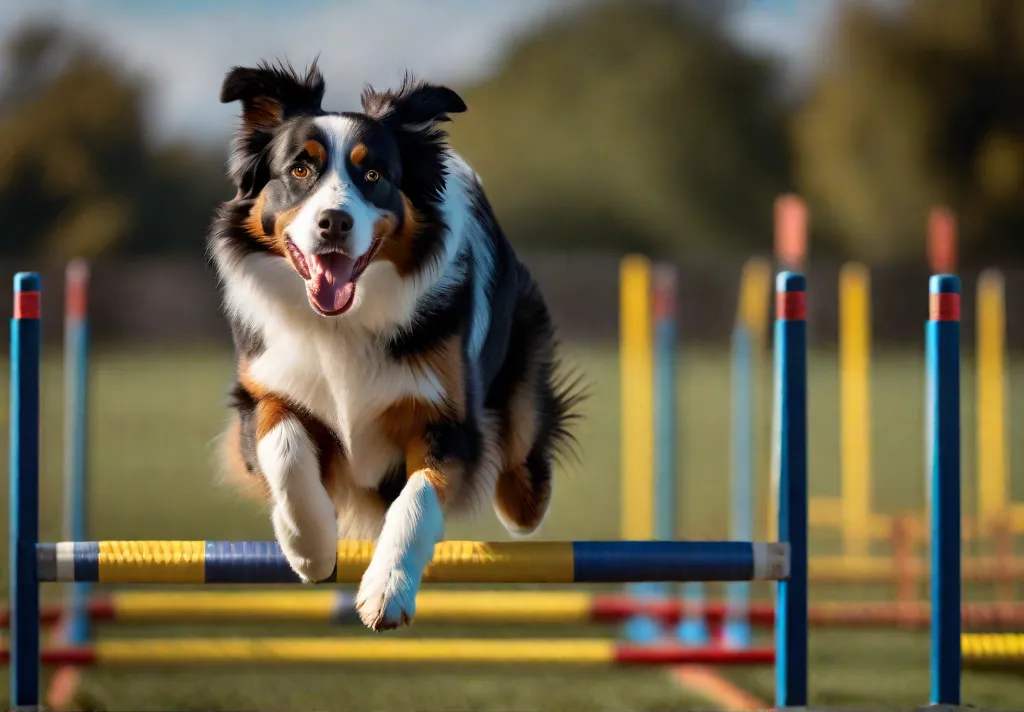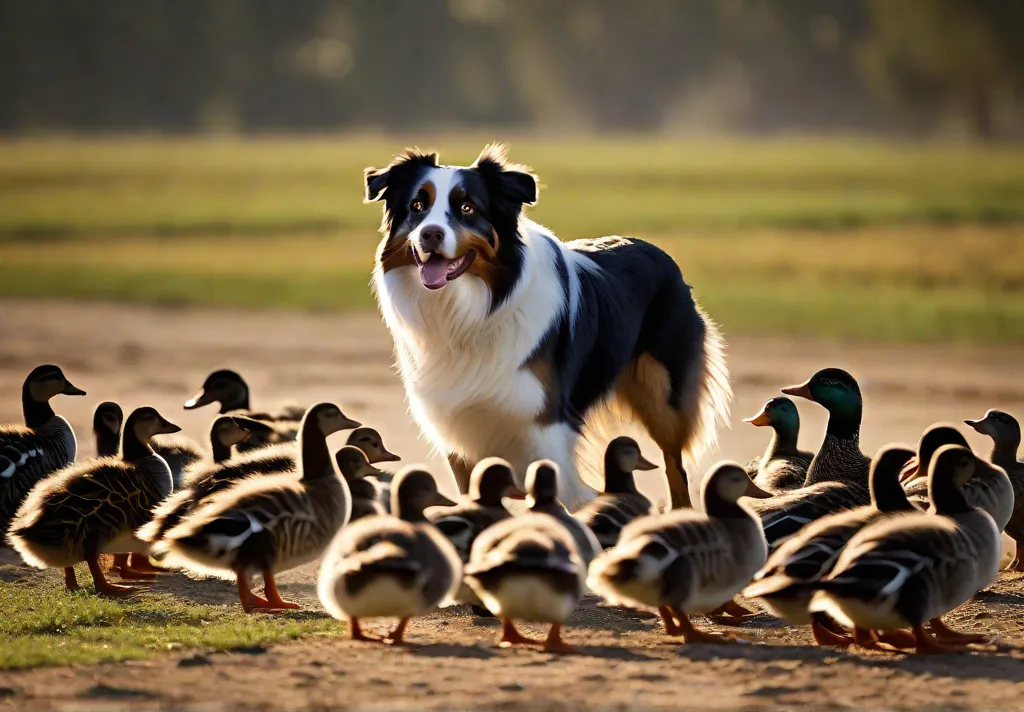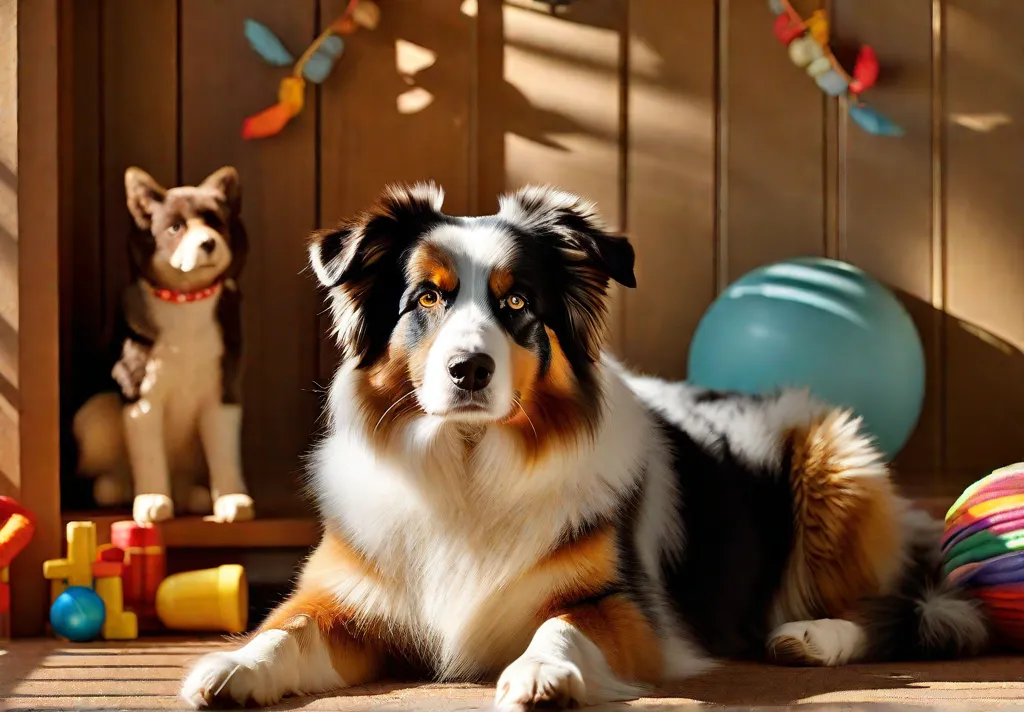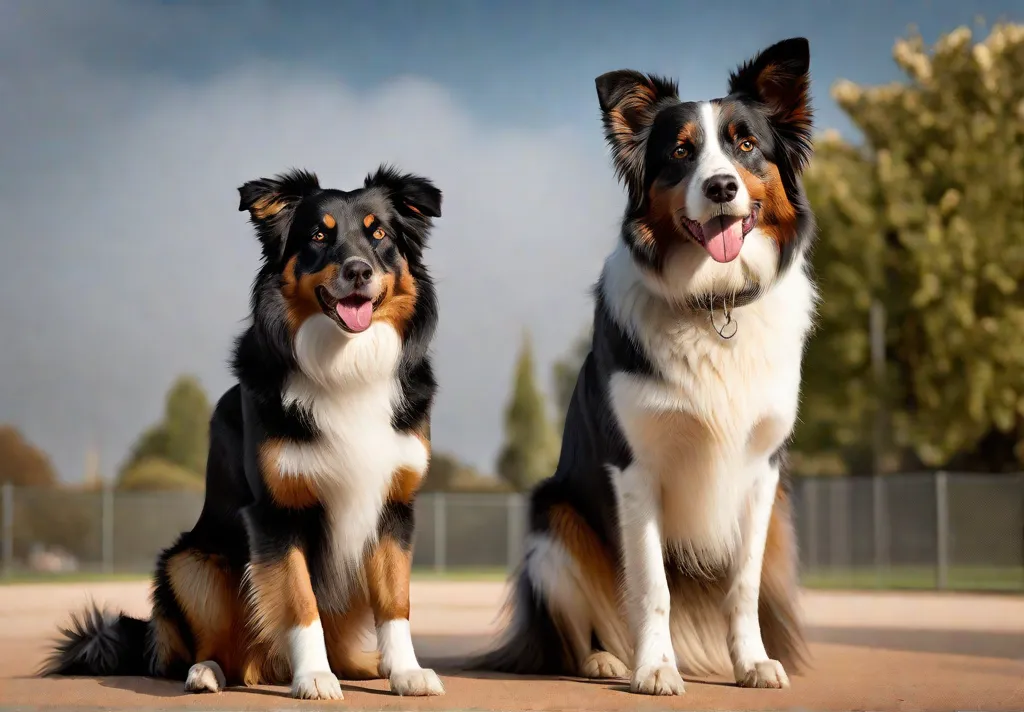Do you cherish those adventures into the great outdoors with your furry companion by your side? As an Australian Shepherd owner, I know that boundless exuberance as your pup leads the charge up the trail, pausing to ensure their human has stayed caught up.
But when your Australian Shepherd crosses the threshold into their senior years, have you done everything possible to ensure they continue enjoying those treasured activities well into their sunset stretches?
While Australian Shepherds are celebrated for their sharp intellect and tireless work ethic, they remain prone to specific health issues that can diminish their vibrancy if addressed. However, knowledge is power. Equip yourself with the top strategies for supporting your Australian Shepherd’s wellness at every life stage.
When those secrets are embraced wholeheartedly, your Australian Shepherd will thank you with years of unwavering companionship, their lust for life never wavering.
Table of Contents
- 1 Introduction to Australian Shepherd Health Secrets
- 2 Secret 1: Tailored Nutrition
- 3 Secret 2: Regular, Engaging Exercise
- 4 Secret 3: Routine Health Checks
- 5 Secret 4: Socialization and Mental Well-being
- 6 Secret 5: Grooming for Health and Comfort
- 7 Secret 6: Protecting Joints and Mobility
- 8 Secret 7: Training and Mental Stimulation
- 9 Secret 8: Love and Affection
- 10 Conclusion
- 11 Frequently Asked Questions
- 12 Related posts:
- 13 Australian Shepherd Dogs
- 14 12 Rules for a Happy Australian Shepherd Home
- 15 Ultimate Guide to Raising an Australian Shepherd Puppy
- 16 12 Aussie Shepherd Must-Haves for the Best Dog Life
Introduction to Australian Shepherd Health Secrets
Australian Shepherds demand a great deal from their owners to mirror the great deal they offer us in return. Their active dispositions and high intelligence require more tailored care than less energetic breeds.

As Australian Shepherd owners, it’s our responsibility to provide an environment where our dogs can thrive mentally and physically. Understanding and catering to their unique needs allows this exceptional breed to showcase its finest and longest-lasting qualities.
Secret 1: Tailored Nutrition
The fuel powering of any engine is instrumental in determining performance and longevity. Your Australian Shepherd is no different. The proper nutrition tailored to their age, size, and activity level is the foundation for supporting muscle development, organ function, disease prevention, and an overall vitality that shines through from nose to tail.
The Role of Proteins and Fats
- Proteins supply amino acids that encourage muscle growth and repair worn tissues.
- Fats offer concentrated energy to fuel their lively dispositions and active lifestyles.
- Aim for at least 20% protein and 10% fat in their diet.
Catering to Different Life Stages
An Australian Shepherd’s nutritional needs fluctuate across their lifespan.
- Puppies require diets higher in calories, proteins, vitamins, and minerals to support rapid growth.
- Adults thrive on balanced diets that maintain ideal weight and energy.
- Seniors tend to benefit from reduced calories and higher fiber for joint health and digestive support.

Selecting the Right Food
When perusing pet store shelves, opt for premium brands boasting high-quality ingredients that are formulated explicitly for active breeds like the Australian Shepherd. Steer clear of fillers, artificial additives, and common allergens like corn, wheat, and soy.
A healthy diet enhances coat luster and skin health and supports your Australian Shepherd’s high-octane lifestyle.
Secret 2: Regular, Engaging Exercise
Australian Shepherds flourish when their bodies AND minds stay challenged. As a working breed developed to herd livestock across expansive ranches, Australian Shepherds need ample outlets for their energy and intelligence.
Physical Activities
- Flyball: Teams take turns releasing a ball for their dog to catch and return, hurdling obstacles. This fast-paced game taps into their agility and ball-driven instincts.
- Treibball: Uses more giant fitness balls that dogs herd around a course, leveraging their innate herding abilities.
- Agility Training: Guides dogs through an obstacle course at speed, evaluating performance on accuracy and time. This activity engages both physical and mental capacities.

Mental Enrichment
Puzzle toys, obedience training, and trick routines provide vital mental stimulation that discourages anxiety and destructive behaviors rooted in boredom. Try varying activities to prevent staleness.
Catering to Different Conditions
Adjust exercise plans depending on weather, age, and health status. Overdoing activity in extreme heat or cold can cause harm. Scale back intensity and duration if your Australian Shepherd seems reluctant or overtired. When in doubt, consult your veterinarian.
An exercised dog is a happy, healthy dog. Work those bodies and brains!
Secret 3: Routine Health Checks
Early detection proves pivotal in effectively managing diseases. Australian Shepherds face increased susceptibility to certain orthopedic, neurological, and ophthalmological conditions. Establish a relationship with a trusted veterinarian and stick to regular checkups to monitor your dog’s changing health across their lifespan.
Core Veterinary Services
- Annual Exams: Assess current health status and body condition
- Vaccinations: Protect against dangerous infectious diseases like parvovirus and rabies
- Parasite Prevention: Guard against internal parasites through dewormers and external parasites like fleas and ticks

Prioritizing Dental Health
Neglected dental care allows bacteria and plaque to spread, causing gum disease, tooth decay, and tooth loss. Ideal prevention includes:
- Annual dental cleanings and exams
- Daily tooth brushing
- Dental treats and chews
Intervene early when you spot signs of dental disease like red and swollen gums, loose teeth, or foul breath.
Secret 4: Socialization and Mental Well-being
Australian Shepherds thrive when exposed to a spectrum of sights, sounds, people, and animals in a gradual, positive manner. As herding dogs, they express innate tendencies to “herd” children, other pets, or even inanimate objects like toys or balls. Proper socialization and training help them differentiate appropriate contexts for such behaviors.
Socialization Tips
- Arrange regular play dates with friend’s well-mannered dogs
- Invite new people over regularly so they grow accustomed to visitors
- Bring them on errands to pet stores or outdoor malls on less crowded days
- Enroll in group training classes for exposure to other dogs in a controlled setting

Curbing Nuisance Herding
Redirect your Australian Shepherd’s attention when they begin herding inappropriate “targets” by:
- Issuing a command like “leave it” and then praise for compliance
- Engaging them in a game of fetch to shift focus
- Providing puzzle toys stuffed with treats when guests visit
Proper socialization and training set the stage for an Australian Shepherd that shines in any setting!
Secret 5: Grooming for Health and Comfort
Behind that gorgeous, flowing coat lies intense shedding and a risk of painful mats if not groomed sufficiently. Establish a consistent grooming routine to enhance your Australian Shepherd’s comfort, reduce loose hair, and monitor skin and coat conditions.
Tools for the Job
- Slicker Brush: Removes dead hair and prevents tangles
- Undercoat Rake: Thins dense undercoat and pulls out loose tufts
- Pin Brush: Smooths and shines top coat between more profound grooming sessions

Grooming Guide
- Brush coat thoroughly 2-3 times per week year-round
- Bathe every 6-8 weeks using gentle dog shampoos
- Check the skin for hot spots, lesions, or irritation with each brushing
- Trim hair around eyes and ears to prevent debris and infections
Consistent grooming keeps your Australian Shepherd looking and feeling their best!
Secret 6: Protecting Joints and Mobility
Australian Shepherds love nothing more than bounding across fields alongside their owners. However, their active dispositions leave their joints vulnerable to wear-and-tear or congenital conditions like hip dysplasia, where the ball and socket joint don’t form properly.
Strategies for Support
- Diet: Feed a lean, nutritious diet to avoid excess weight-straining joints. Supplement with omega-3s to reduce inflammation.
- Exercise: Low-impact activities like swimming prevent additional joint stress.
- Supplements: Chondroitin, glucosamine, and MSM encourage cartilage health.

Early Warning Signs
Catch changes early by watching for:
- Limping or lameness
- Difficulty standing up, climbing stairs, or jumping
- Reluctance to exercise or play
- Discomfort when touched near joints
Consult your veterinarian if you notice any changes in mobility or posture. Together, you can develop a treatment plan tailored to your Australian Shepherd’s needs.
Protect those precious joints today to keep your pup active for years!
Secret 7: Training and Mental Stimulation
The intelligence and eagerness to please ingrained in Australian Shepherds prime them to excel at training activities. Start early with positive reinforcement techniques that make lessons fun!
Training Tips
- 5-15 minute sessions prevent boredom yet challenge their minds
- Use high-value treats, praise, and play as rewards for success.
- Build up complex commands using incremental steps.
- Practice obedience skills like “sit,” “stay,” and “heel,” which tap into their herding heritage.

Games for Mental Exercise
Incorporate games into your training routines that test their problem-solving skills:
- Hide-and-Seek: Have your Australian Shepherd sit-stay, and then hide treats around the house for them to sniff out.
- Nosework: Hide scented items and encourage your dog to use scent rather than sight to locate them.
- Puzzle Toys: Food dispensing toys challenge your Australian Shepherd to manipulate the device differently to earn treats.
A sharp mind complements an active body. Put that intellect to work!
Secret 8: Love and Affection
While the preceding secrets focus on physical elements of care, providing ample emotional support remains equally vital. Australian Shepherds thrive when they are respected members of the family.
- Shower them with affection through petting, praise, and time snuggling on the couch
- Respond to their needs like anxiety, excitement, or fear with empathy
- Set reasonable boundaries paired with positive reinforcement
- Share activities you both enjoy to strengthen your bond

Your loving commitment keeps their tails wagging!
Conclusion
Unlocking longevity and sustaining that coveted vitality in your Australian Shepherd relies on embracing these 8 Golden Secrets at every life stage. Like any engine, an Australian Shepherd needs proper fuel and maintenance to purr smoothly across countless miles.
The adage goes, “To know your Australian Shepherd is to love them.” Shower them with everything needed not just to survive but to thrive. When provided an environment catered to their unique needs, Australian Shepherds return the favor two-fold with years of fun-filled adventures and steadfast companionship.

Now, get out there and soak up those special moments together! But first, give that furry friend an extra belly rub from me.
Frequently Asked Questions
What is the life expectancy for Australian Shepherds?
With optimal care, Australian Shepherds typically live 12-15 years, though some have exceeded 17 years. Embracing preventative care helps them reach their most extended lifespan.
How can I make grooming more accessible for my Australian Shepherd?
Start young with positive associations. Give treats during sessions, incorporate gentle praise, and keep them short at first. Investing in the right grooming tools also streamlines the process.
What health issues are Australian Shepherds prone to?
Hip and elbow dysplasia, eye problems like cataracts, autoimmune diseases, epilepsy, and bloat top the list. Catch issues early by following routine veterinary visits to diagnose and treat conditions promptly.
Why does my Australian Shepherd herd my children or other pets?
Herding stems from hundreds of years of assisting ranchers, making it instinctual. Proper training and socialization from a young age help curb nuisance herding behavior. Redirect their focus when herding inappropriately.